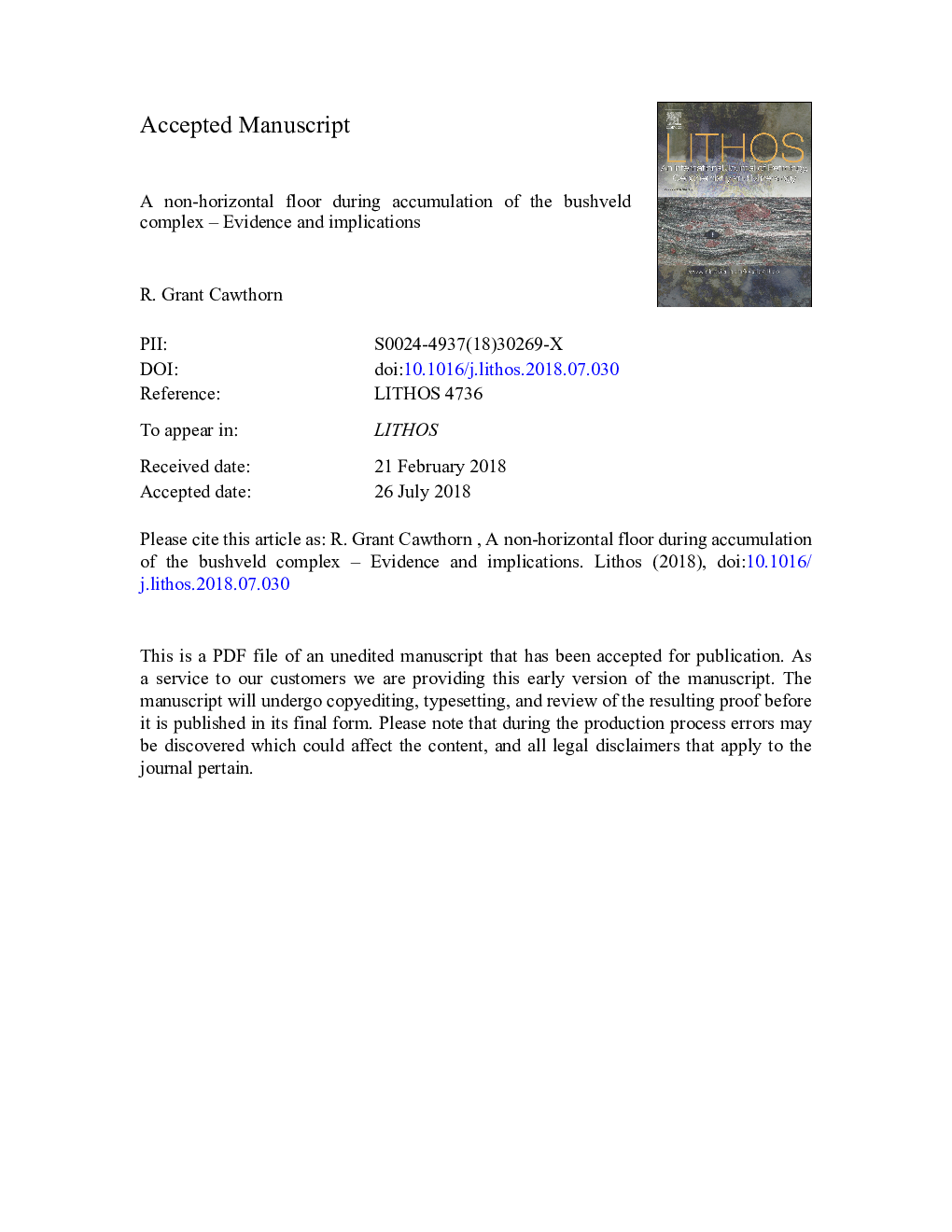| Article ID | Journal | Published Year | Pages | File Type |
|---|---|---|---|---|
| 8911524 | Lithos | 2018 | 39 Pages |
Abstract
Many models of igneous layered complexes assume that the instantaneous boundary between accumulated grains and overlying magma was horizontal. In the case of the Bushveld Complex, several km of hot, dense magma intruded into low-density sandstones and shales. This unstable density profile and the effect of heating of the floor rocks produced diapirism, features that have been well-documented around the intrusion. As a consequence, the grain - magma interface was probably not horizontal. The Al2O3 content of orthopyroxene is very sensitive to pressure (0.2% increase per km depth). It is shown here that the orthopyroxene compositions in the Upper Group 2 chromitite unit from nine detailed profiles change from 1.5 to 1.1% Al2O3 (at the same Mg/Mgâ¯+â¯Fe value) along a strike length of 160â¯km in the western Bushveld. Such changes indicate that there was topographic relief possibly >1.5â¯km to the grain - magma interface. Such low Al2O3 concentrations and the lateral variations challenge models that envisage injections of pyroxene slurries either from depth or from a laterally displaced source. Basal, dense additions of magma at such intervals as the UG2 chromitite and Merensky units would need to have been >1.5â¯km in vertical extent in order to flood over such topographic variations. The proposed model to explain such pyroxene compositions involves two-phase convection with initiation of crystallization close to the top of the magma chamber and continuing grain growth and new grains nucleating as the package of grains plus magma descended to the uneven floor.
Keywords
Related Topics
Physical Sciences and Engineering
Earth and Planetary Sciences
Geochemistry and Petrology
Authors
R. Grant Cawthorn,
